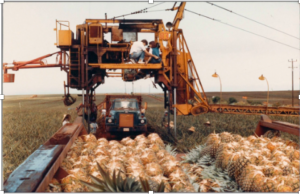OiM HT19 Film screening
Dear Oim-ers,
We have now completed the OiM fim screening programme for 2019.I hope that you will enjoy the films and that we will have some stimulating discussions afterwards. As you may have noticed I have changed the start time to 13.00 because we are a much smaller group than usual and I expect the morning sessions to end by 11.30 am.
See you tomorrow!
Film Screening Objects in Motion – HT19
Tuesdays 13.00– 15.30 / 51 Banbury Road, Basement Seminar Room
Wk 1 Poverty Inc Miller, M. 2014. (90 min)
Poverty, Inc. follows the butterfly effect of our most well-intentioned efforts and pulls back the curtain on the poverty industrial complex – the multi-billion dollar market of NGOs, multilateral agencies, and for-profit aid contractors. Are we catalyzing development or are we propagating a system in which the poor stay poor?
Wk 2 I, Daniel Blake Loach , K 2016. (100 min)
After having suffered a heart-attack, Daniel Blake, a 59-year-old carpenter must fight the bureaucratic forces of the system in order to receive Employment and Support Allowance.
OR Employment Office Gregoire, C and A. Schiltz. 2015 (75 min )
This film shows what it means today to have a job, when work is more and more precarious, employed and unemployed alike less and less secure and the welfare state shrinking away and under attack.
Wk 3 The Possibility of Spirits. Van de Port, M. 2016. (71 min)
What is it that you film when you film a spirit? Shot in Bahia (Brazil) this film keeps the baffling mystery of spirit possession center stage.
OR Bea wants to Know Canals, R. 2018. (40 min)
Bea is a young Puerto Rican university student who decides to go to see several mediums in order to understand why everything is going wrong in her life. She will find the answers to her questions through Pedro, a Peruvian-born medium based in San Juan, who will encourage her to take part in a spiritual cleansing ritual to expel the negative energies which prevent her from being completely happy.
Wk 4 Patrasche – A Dog of Flanders Made in Japan Volkaert, D. and A. van Dienderen. 2008. (85 min)
Every day Japanese tourists who visit the Antwerp Cathedral in Flanders start to cry in front of Rubens ‘Descent from the Cross’. They are moved because of a tiny book ‘A Dog of Flanders’ written in 1872 by the British Louise de la Raimee, which was taught in Japanese high schools and turned into an animated series that was watched on TV by millions during the 1970s, but which most people in Flanders remain unaware of and/or uninterested in.
OR The Cruise Miller, B. 1998 (76 min)
Take an unforgettable ride through the concrete canyons of Manhattan with Timothy “Speed” Levitch as your guide.
Wk 5 When China met Africa Francis, M and N. 2010. (74 min)
This film follows three entrepreneurs working on the frontline of China’s foray into Africa. It explores the burgeoning economic relationship between China and Zambia with an acute eye for the discomfort of discordant cultures co-existing.
OR The Chinese are Coming to Town. Yu, R. 2010. (58 min)
The Chinese entrepreneur Mr. Luo has come to the Swedish city Kalmar with a multi billion investment and grandiose plans. He promised big visions and a bright future for the people in this small town by the Baltic Sea.
Wk 6 In Comparison – Faroki, H. 2009. (61 min)
This film tracks the individual steps in the manufacture and use of bricks in Africa, India and Europe, comparing different traditions. Instead of using a commentary, the images speak for themselves using color, movement and sound of bricks to explore the basic building block of social relationships and economic structures. .
OR Home Sweet Home Colusso, E. 2012 (90 min)
Centred around the now derelict Heygate Estate in Southwark (London), this film tells a complex but intimate story of urban and social transformation, and asks: what kind of society are we building?
Wk 7 Ananas (Pineapple) Gitai, A. 1983. (78 min)
“A can of pineapple… “made in the Philippines,” “packaged in Honolulu,” “distributed in San Francisco” and the label “printed in Japan” … Pineapple scrutinises the multinational economy; it eschews the ethnocentric voice-over narration and voyeuristic camera characteristic of ethnographic films by giving its many interviewees the luxury of time to speak for themselves rather than, as is more customary, being spoken ‘on behalf of’.
OR Water on the Table Marshall. L. 2010 (79min)
This film explores Canada’s relationship to its freshwater, arguably its most precious natural resource. Is water a commercial good like running shoes or Coca-Cola? Or, is water a human right like air?
Wk 8 Dust (Staub) Bitomsky, H. 2007. (90 min)
This film follows the path of dust… the place where it settles, and seeks out people who contend with it. Columns of cleaners in their daily battle for cleanliness, inventors of air cleansing products, scientists who investigate the damaging consequences of fine dust and uranium munitions from the US army’s stock of weapons, botanists, meteorologists, astronomers and artists.
OR Manufactured Landscapes Baichwal, J. 2006. (86 min)
Photographer Edward Burtynsky shoots the evidence and effects of China’s massive industrial revolution, allowing viewers to meditate on our impact on the planet and witness both the epicenters of industrial endeavor and the dumping grounds of its waste.







